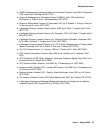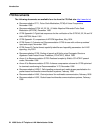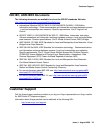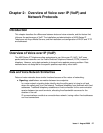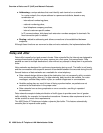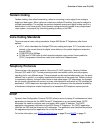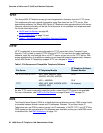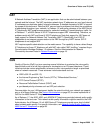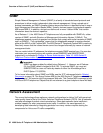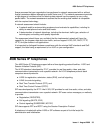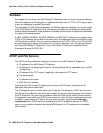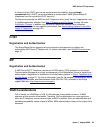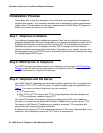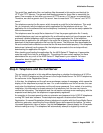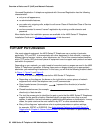
Overview of Voice over IP (VoIP)
Issue 4 August 2006 31
NAT
A Network Address Translation (NAT) is an application that can be administered between your
network and the Internet. The NAT translates network layer IP addresses so your local intranet
IP addresses can duplicate global, Internet addresses. A detailed discussion of NAT is beyond
the scope of this document. Note that NAT use can lead to problems that affect the consistency
of addressing throughout your network. In Release 1.6 and earlier releases of the 4600 Series
IP Telephones, NAT is not recommended for networks handling IP-based telephony traffic. As
of Release 1.7, all 4600 Series H.323 IP Telephones support NAT interworking. Therefore, no
problems exist with NAT and these H.323 IP telephones. Note that support for NAT does not
imply support for Network Address Port Translation (NAPT). Specifically, the H.323 IP
telephones do not support communication to the PBX through any NAPT device. SIP IP
telephones do not support NAT.
NAT requires specific administration on the media server. The capability to have a direct Avaya
IP Telephone-to-Avaya IP Telephone call with NAT, also called “NAT shuffling,” requires Avaya
Communication Manager Release 1.3 software. See the Administration for Network
Connectivity document listed in Related Documents
on page 18.
QoS
Quality of Service (QoS) is a term covering several initiatives to maximize the voice quality
heard at both ends of a call that originates or terminates on an IP-based telephone. These
initiatives include various prioritization schemes to offer voice packets a larger or prioritized
share of network resources. These schemes include standards such as:
● IEEE’s 802.1D and 802.1Q,
● the Internet Engineering Task Force’s (IETF’s) “Differentiated Services,”
● RTP Control Protocol (RTCP),
● Resource ReSerVation Protocol (RSVP), and
● port-based priority schemes such as UDP port selection.
Documentation for your LAN equipment details the extent to which your network can support
any or all of these initiatives. See Server Administration
on page 53, for some implications of
QoS for the 4600 Series IP Telephones.
As of Release 1.7, the 4620, 4630, and 4630SW IP Telephones provided network audio quality
information to the end user. This network audio quality information might be useful to the LAN
Administrator. As of Release 1.8, all 4600 Series IP Telephones provide some level of detail
about network audio quality. For specific information, see Network Audio Quality Display on
4600 Series IP Telephones on page 88.



